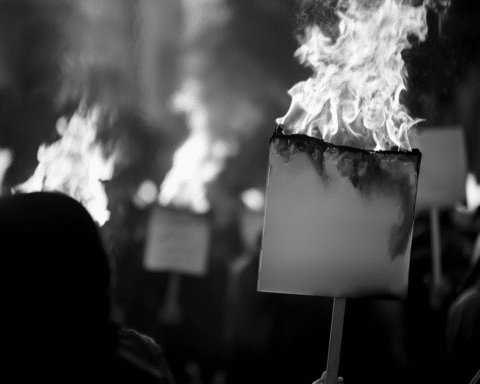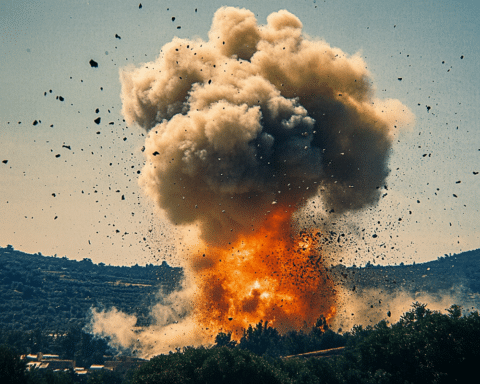As tensions escalate in the Middle East, the region teeters on the brink of what could become a catastrophic all-out war. Recent events have intensified fears among nations and political analysts alike. The situation is complex, with multiple actors playing a high-stakes game of power and retaliation.
An Israeli airstrike last week took the life of a Hezbollah commander in Lebanon, marking a significant escalation in hostilities. Hezbollah’s response was swift and aggressive, targeting a sensitive Israeli base with rockets. Israel, in turn, escalated the situation by eliminating a senior Hamas militant in Beirut through an airstrike.
These strikes have heightened the risk of a larger conflict, suggesting that the ongoing war in Gaza could spill over into the broader region. The longstanding standoff, involving the U.S. and Israel on one side and Iran and its allied militant groups on the other, adds to the precariousness of the situation. A recent U.S. airstrike in Baghdad killed an Iran-backed militia leader, while U.S. Navy engagements with Iran-aligned Houthi rebels in the Red Sea further complicate the dynamics.
The internal divisions within each camp add another layer of volatility. Hamas’s Oct. 7 attack across southern Israel, which triggered the current war in Gaza, may have been an attempt to involve its allies in a broader conflict. Israelis and Americans, on the other hand, are contemplating strategies to alter the dynamics in Lebanon while trying to contain the conflict.
As the intertwined chess games of regional politics become increasingly complex, the potential for miscalculation rises, raising fears of unintended consequences.
GAZA IS GROUND ZERO:
The recent events in Gaza have been particularly pivotal. Hamas claims its Oct. 7 attack was a response to decades of Israeli domination, a sentiment that resonates across the region. Israel’s subsequent military campaign in Gaza, one of the 21st century’s most devastating, has put pressure on the Axis of Resistance — Iran and its supported militant groups — to respond despite the potential risks of escalating the conflict.
HEZBOLLAH THREADS THE NEEDLE:
Hezbollah, in particular, faces a dilemma. The group must balance between appearing weak by tolerating Israeli attacks and the catastrophic consequences of triggering a total war with Israel. Recent strikes along the border, including a barrage of 40 rockets fired at an Israeli military base, seem calculated to send a message without starting a war, but the potential for escalation remains high.
US DETERRENCE ONLY GOES SO FAR:
The U.S. has attempted to assert its influence, deploying two aircraft carrier strike groups to the region. However, the situation remains fluid and unpredictable, with Iran-backed groups in Syria and Iraq continuing their assaults on U.S. bases and international shipping in the Red Sea.
HOW DOES THIS END?
The path to resolution remains to be determined. The U.S., with its significant military and diplomatic support for Israel, is seen as a critical player capable of influencing the outcome. High-profile diplomatic visits to the region by U.S. Secretary of State Antony Blinken and other European leaders reflect efforts to contain the violence through diplomacy. Yet, as noted by analysts like Ali Hamadeh, the situation might ultimately be resolved not through diplomacy but through the language of military action and strategic posturing.
The Middle East stands at a critical juncture. The delicate balance of power, marked by a series of retaliatory strikes and deep-rooted political divisions, leaves the region vulnerable to a broader conflict. The international community watches anxiously as leaders and military strategists navigate this complex geopolitical landscape, hoping for a resolution that avoids a full-scale war.




